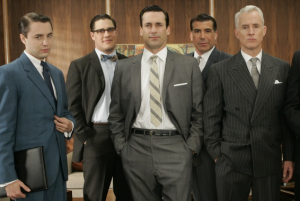Daisy Whitney’s “New Media Minute” covers the ongoing story of YouTube, its partners and advertisers. Prompted by MediaWeek’s “Placement Police” article, it seems the Wild West is getting settled.
Whitney shows some of my Fox “Fringe” parodies, and discusses Hitviews, for whom I’m chief strategical officer.
Here’s what I believe is “the least advertisers and YouTube partners need to know” about sponsored videos via YouTube “stars”:
- YouTube hasn’t yet, to my knowledge, deleted a video or terminated a partner over this. They have the right, but don’t want to alienate the portion of banwidth (partners) that is revenue producing and keeps audiences returning.
- It’s really unethical for an advertiser to get an idea about a YouTube “star” from Google/YouTube sales person, and then circumvent YouTube to avoid media spending. I’ve said no to the terms of one attractive ad deal when I learned that my Google advocate (who brought me to a leading brand) was being “shut out” of a deal he created. We’re still working it out.
- A sponsored video should never be “monetized” with additional overlay (InVideo) or Google text ads. This could create conflicting advertisers, which is good for neither YouTube or the sponsor (if you’re Coke commissioning a sponsored video, do you really want to see a Pepsi pop-up ad)?
- When a partner cuts a deal directly with an advertiser, the distributor (YouTube) is “shut out.” Therefore YouTube has no incentive to promote the video through a variety of means now available to other “monetized” content. This isn’t sustainable or scalable.
- Eventually we’ll have ways to scale programs… and ensure the partner, YouTube and advertiser benefit. One way might include a sponsor also buying InVideo ads… or other pay-per-view, pay-per-click, pay-per-impressions to help get the video scale beyond the partner’s audience. This will help a sponsor’s video with a specific partner get far more reach, and ensure that YouTube as the distributor is fairly compensated for promoting and paying that bandwidth bill.
Thanks for the congratulations, Ms. Daisy Whitney. Glad you’ve got a mess full o’ sponsors yourself, and I applaud their targeted marketing (versus the old “rent an ignored booth at the giant trade show” method).
Here’s a sneak preview of the new NaltsConsulting site. It needs some work, and the name is rather dull. But I’ve had a number of people advise on sticking with the Nalts brand.

